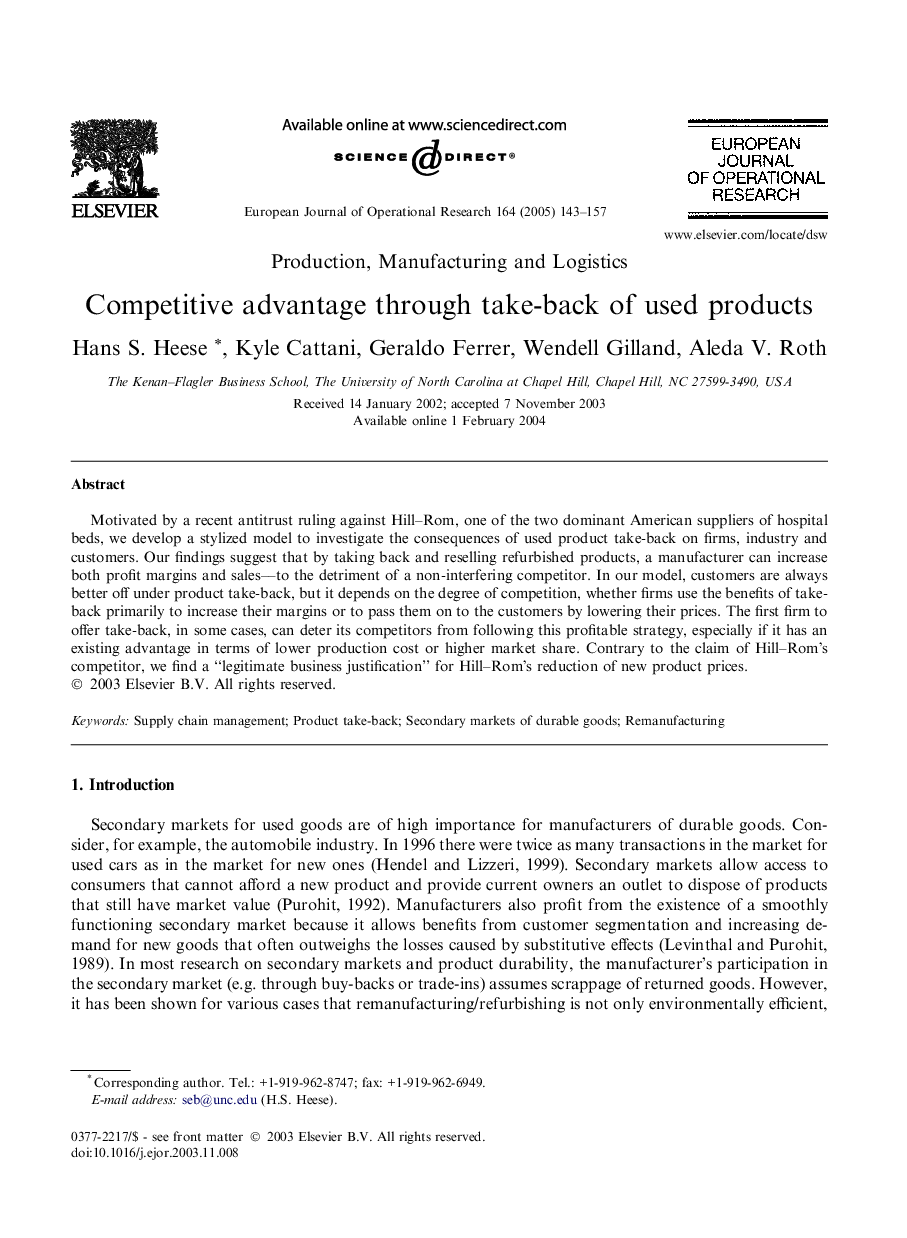| Article ID | Journal | Published Year | Pages | File Type |
|---|---|---|---|---|
| 9663842 | European Journal of Operational Research | 2005 | 15 Pages |
Abstract
Motivated by a recent antitrust ruling against Hill-Rom, one of the two dominant American suppliers of hospital beds, we develop a stylized model to investigate the consequences of used product take-back on firms, industry and customers. Our findings suggest that by taking back and reselling refurbished products, a manufacturer can increase both profit margins and sales--to the detriment of a non-interfering competitor. In our model, customers are always better off under product take-back, but it depends on the degree of competition, whether firms use the benefits of take-back primarily to increase their margins or to pass them on to the customers by lowering their prices. The first firm to offer take-back, in some cases, can deter its competitors from following this profitable strategy, especially if it has an existing advantage in terms of lower production cost or higher market share. Contrary to the claim of Hill-Rom's competitor, we find a “legitimate business justification” for Hill-Rom's reduction of new product prices.
Related Topics
Physical Sciences and Engineering
Computer Science
Computer Science (General)
Authors
Hans S. Heese, Kyle Cattani, Geraldo Ferrer, Wendell Gilland, Aleda V. Roth,
